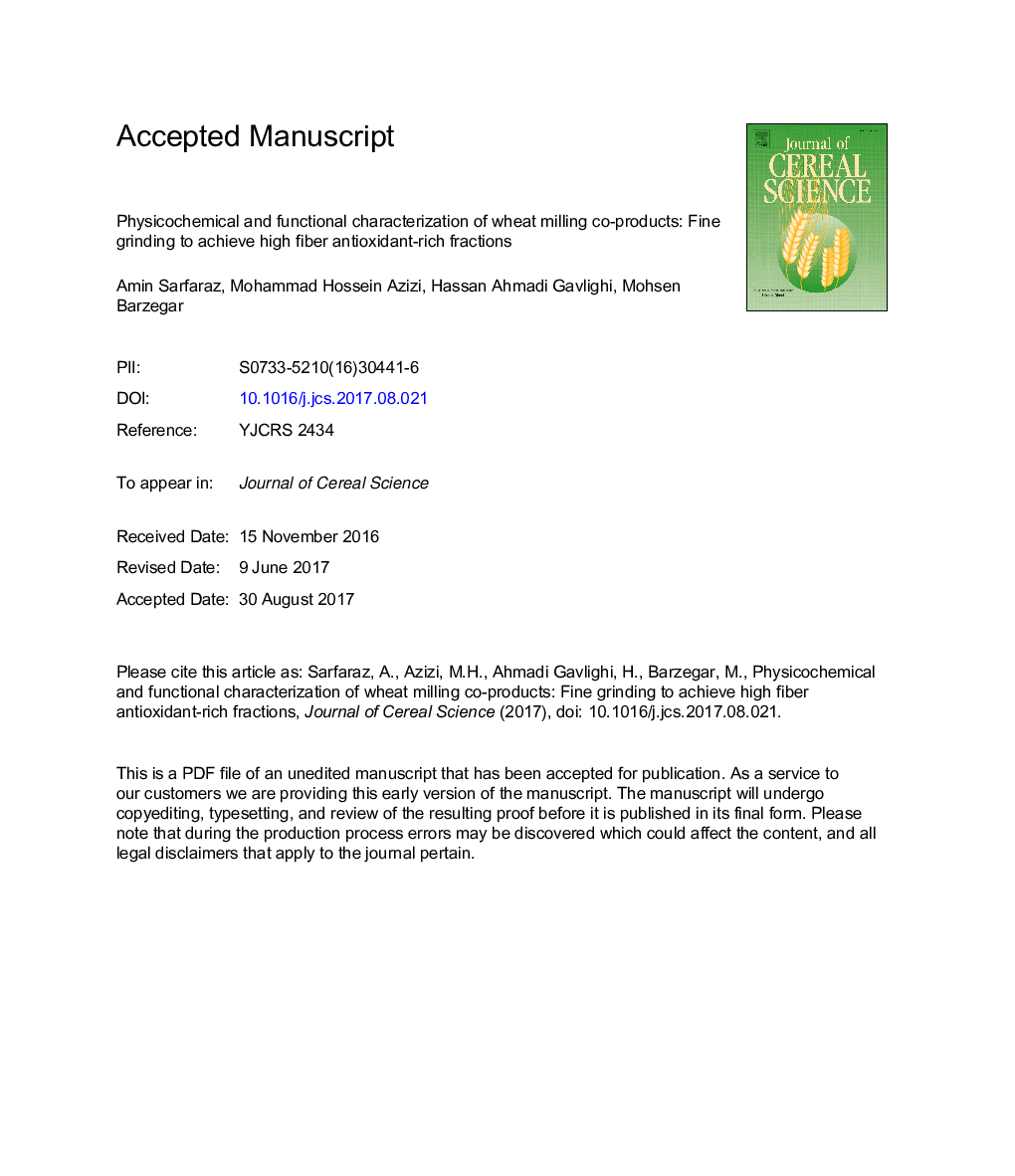| Article ID | Journal | Published Year | Pages | File Type |
|---|---|---|---|---|
| 5762424 | Journal of Cereal Science | 2017 | 28 Pages |
Abstract
Milling of wheat produces co-products rich in dietary fiber, micronutrients and phytochemicals which can be used to integrate healthy functional foods. In the study different co-products including bran, shorts, and red dog were identified by physicochemical and functional analyses. The results showed that the fat, protein and starch contents decreased in order of red dog > shorts > bran (P < 0.05). The ash, neutral detergent fiber (NDF), acid detergent fiber (ADF), hemicellulose, water and oil holding capacities (WHC, OHC) were in order bran > shorts > red dog, respectively (P < 0.05). Antioxidant capacity was in order red dog > shorts > bran (P < 0.05). The bran was selected as the co-product with the highest fiber that was finely grounded to four different fractions (>355, 250-355, 180-250, <180 μm) and they were characterized more detail. The fat, protein and starch contents decreased with increasing bran particle size (P < 0.05). The ash, crude fiber, NDF, ADF, hemicellulose and WHC and OHC increased with the increasing bran particle size (P < 0.05). DPPH radical scavenging activity increased with increasing particle size (P < 0.05). The bran fractions 250-355 and >355 μm can be used as high fiber ingredients rich in antioxidants to generate functional foods.
Related Topics
Life Sciences
Agricultural and Biological Sciences
Agronomy and Crop Science
Authors
Amin Sarfaraz, Mohammad Hossein Azizi, Hassan Ahmadi Gavlighi, Mohsen Barzegar,
